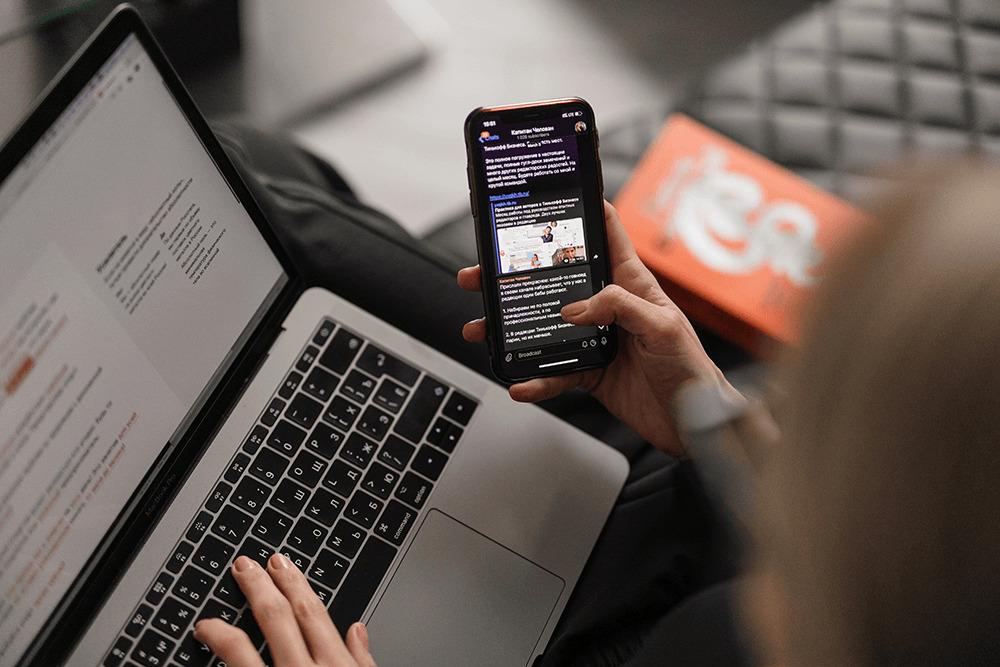Effective internal communication is the lifeblood of any organization, playing a pivotal role in fostering employee communication, enhancing productivity, and promoting a sense of unity and purpose among team members. As the business landscape continues to evolve in response to rapid technological advancements and shifting employee expectations, HR leaders are increasingly challenged to devise and implement innovative strategies that facilitate seamless communication, bridging gaps between hierarchical levels, departments, and remote or in-office teams. By embracing a proactive and multifaceted approach to improve internal communication, HR leaders can empower employees to collaborate effectively, share insights, and contribute to the achievement of organizational goals, creating a thriving workplace that fosters innovation and drives success.
In this blog post, we will explore the key components of effective internal communication and delve into the strategies HR leaders can employ to improve internal communication and boost employee engagement. Furthermore, we will discuss the impact of incorporating meditation and mindfulness practices into the workplace, highlighting their potential to improve our own communication skills, focus, and emotional intelligence. Lastly, we will provide guidelines for measuring the success of internal communication initiatives and monitoring their influence on employee engagement and happiness. By adopting these proven strategies, HR leaders can cultivate an open and inclusive communication culture, unlocking the full potential of their workforce and propelling their organizations to new heights of accomplishment.
The Key Components of Effective Internal Communication

Successful internal communication is built upon several fundamental principles that ensure the flow of information is consistent, inclusive, and meaningful. By understanding and incorporating these elements into their communication strategies, HR leaders can pave the way for a thriving and engaged workforce.
Transparency and Open Dialogue
Transparent communication is essential for cultivating trust and fostering a sense of belonging among employees. Encouraging open dialogue helps break down silos and hierarchical barriers, enabling team members to share ideas, raise concerns, and contribute to problem-solving. HR leaders must champion a culture of transparency by facilitating candid conversations, sharing information about company performance, and addressing challenges head-on.
Consistent Messaging and Regular Updates
In the fast-paced business world, it is crucial to maintain a steady flow of information to keep employees informed, engaged, and aligned with organizational goals. Consistent messaging, internal communications goals and regular updates ensure that everyone is on the same page and feels connected to the company’s mission. HR leaders should establish a communication cadence, using various channels to disseminate information, celebrate successes, and share relevant news.
Inclusion and Diversity in Communication Channels
To cater to a diverse and multi-generational workforce, organizations must employ a mix of communication channels that cater to different preferences and needs. By incorporating both traditional and modern tools, HR leaders can create a more inclusive communication environment that accommodates various working styles and promotes active participation. This approach ensures that every employee feels heard and valued, regardless of their role or location.
Feedback Loops and Active Listening
Effective internal communication is a two-way street, requiring organizations to not only share information but also actively listen to employees’ feedback, concerns, and suggestions. Establishing feedback loops empowers team members to voice their opinions, fostering a sense of ownership and involvement in decision-making. HR leaders should implement mechanisms for collecting and addressing feedback, demonstrating that employee input is valued and driving continuous improvement within the organization. Feedback loops help improve internal communications and also facilitate communication in a healthy way.
Strategies to Improve Internal Communication

To improve internal communications and boost employee communication, HR leaders must adopt a comprehensive approach that encompasses various strategies. By weaving these tactics into their internal communications plan and communication frameworks, organizations can foster a more connected and motivated workforce.
Promote a Culture of Open Communication
Encourage employees to speak up: Empower employees by creating an environment where they feel comfortable sharing their thoughts and opinions. Encourage team members to raise concerns, contribute ideas, and otherwise engage employees in constructive dialogue. This can be achieved through town hall meetings, open-door policies, and anonymous feedback channels.
Recognize and reward transparent communication: Acknowledge and celebrate instances of transparent communication, reinforcing the importance of openness and honesty within the organization. Recognize employees who demonstrate exemplary communication skills, and reward those who contribute to fostering a culture of open dialogue.
Implement Various Communication Channels
Traditional channels (email, newsletters, meetings): Leverage traditional communication tools such as email, newsletters, and meetings to disseminate important updates and announcements. These same communication methods continue to be effective in reaching a broad audience and providing detailed information.
Modern channels (internal social networks, chat apps): Embrace modern communication platforms and collaboration tools such as internal social networks and chat apps to facilitate real-time collaboration, foster informal interactions, and accommodate remote or hybrid workforces. These tools can help create a more connected and agile organization.
Enhance Leaders’ Communication Skills
Training programs for effective communication: Provide communication skills training to leaders, equipping them with the internal knowledge, tools and techniques needed to convey information clearly, listen actively, and inspire their teams. Programs can cover topics such as storytelling, empathy, and effective presentation skills.
Coaching for individual leaders: Offer personalized coaching sessions to help leaders develop their unique communication styles, identify areas of improvement, and overcome specific communication challenges. This tailored approach can help leaders grow and excel in their roles, further improving internal communications.
Establish Regular Check-ins and Updates
Company-wide updates: Schedule periodic company-wide updates to share information on organizational performance, strategic initiatives, and other relevant news. These updates can take the form of written reports, video messages, or live presentations, ensuring that all employees are informed and aligned with the company’s vision.
Departmental and team-based updates: Encourage managers to hold regular check-ins and updates with their respective teams. These meetings can provide a platform for discussing department-specific news, setting expectations, addressing concerns, and celebrating accomplishments. This approach can help to create a sense of unity and purpose within each team.
Meditation: A Key to Improve Internal Communication

As the importance of holistic well-being and mental health gains recognition, forward-thinking organizations are leveraging innovative solutions like Declutter The Mind to enhance employee performance, resilience, and communication. By incorporating this guided meditation app into the workplace, HR leaders can unlock a myriad of benefits that contribute to improved internal communication and employee engagement.
Declutter The Mind is a meditation app for your workplace to help make your team happier and culture healthier. In an average 9-to-5 work day, just 5 minutes of mindfulness meditation can release stress, improve focus, and boost creativity. For your company, a more mindful team means better workplace culture and teamwork.
Benefits of Meditation for Communication
Improved focus and clarity: Regular meditation practice using Declutter The Mind can help employees sharpen their focus and mental clarity, allowing them to process and absorb information more effectively. This heightened awareness can lead to better comprehension and more meaningful contributions during discussions and meetings.
Enhanced empathy and active listening skills: Mindfulness practices fostered by Declutter The Mind can cultivate greater empathy and understanding, enabling employees to listen more attentively and connect with their colleagues on a deeper level. By developing active listening skills, employees can better support one another and collaborate more effectively.
Reduced stress and increased emotional intelligence: Meditation facilitated by Declutter The Mind has been shown to reduce stress and enhance emotional intelligence, equipping employees with the skills to navigate challenging situations and communicate more effectively. This emotional resilience can contribute to improving internal communications and foster a more supportive work environment.
Implementing Declutter The Mind in the Workplace
Provide access to the app for all employees: Offer all employees access to Declutter The Mind, allowing them to benefit from a wide range of guided meditation sessions tailored to various needs and skill levels. This inclusive approach ensures that every team member can participate and prioritize their mental well-being.
Organize group meditation sessions: Encourage group meditation sessions by setting aside dedicated time during the workday for employees to come together and practice mindfulness using Declutter The Mind. These sessions can foster a sense of camaraderie and promote a culture of well-being within the organization.
Integrate meditation into the company culture: Embed the use of Declutter The Mind into the fabric of the organization by incorporating meditation breaks into daily routines, company events, and meetings. By promoting the value of mindfulness and meditation, HR leaders can demonstrate their commitment to employee well-being and foster a culture that prioritizes mental health and effective communication.
By leveraging the power of Declutter The Mind, organizations can seamlessly introduce meditation and mindfulness practices into the workplace, as ways to improve internal communication, employee engagement, and overall well-being. In doing so, HR leaders can create a supportive and high-performing environment where employees can thrive and contribute to the organization’s success.
Measuring the Success of Internal Communication Initiatives

To gauge the effectiveness of internal communication initiatives and their impact on both employee morale and engagement, HR leaders must establish robust evaluation mechanisms. By tracking key metrics and monitoring employee satisfaction, organizations can identify areas for improvement and fine-tune their strategies accordingly.
Track Engagement Metrics
Employee participation rates in communication channels: Assess the level of employee engagement with various internal communication channels and platforms, such as the number of active users, frequency of interactions, and diversity of contributors. These metrics can provide insights into which channels are most effective at reaching employees and fostering participation.
Frequency and quality of feedback received: Analyze the volume and nature of employee feedback, capturing both quantitative and qualitative data. By evaluating the quality and relevance of feedback, HR leaders can determine the effectiveness of communication initiatives and identify opportunities to enhance employee involvement.
Monitor Employee Satisfaction and Engagement
Regular employee surveys and pulse checks: Conduct periodic surveys and pulse checks to assess employee satisfaction, engagement, and perceptions of internal communication. These assessments can help HR leaders understand the overall sentiment within the organization and identify trends or patterns that may warrant further investigation.
Assess correlation between communication initiatives and engagement scores: Evaluate the relationship between internal communication efforts and employee engagement levels, determining whether specific initiatives are associated with increased satisfaction or productivity. This analysis can help organizations refine their strategies and prioritize initiatives that have the greatest potential to drive positive outcomes.
By implementing these measurement techniques, HR leaders can continuously assess the success of their internal communication strategy, ensuring that their efforts remain aligned with organizational goals and employee needs. Through data-driven decision-making, organizations can optimize their internal communication plan and frameworks, fostering a more connected, engaged, and high-performing workforce.
Conclusion

The role of HR leaders to improve internal communication is both critical and multifaceted, requiring a proactive and strategic approach to fostering open dialogue, consistent messaging, and employee engagement. By implementing a combination of traditional and modern communication channels, encouraging employees, promoting a culture of transparency, and offering targeted training and coaching for leaders, HR professionals can create an environment where employees feel informed, valued, and empowered to contribute to the organization’s success.
Moreover, the incorporation of meditation and mindfulness practices into the workplace can yield significant benefits in terms of improved focus, emotional intelligence, and communication skills. By championing these practices and prioritizing employee well-being, HR leaders can further improve internal communications and engagement with new employees, ultimately driving better business outcomes.
Regularly measuring the success of internal communications strategy initiatives and monitoring employee satisfaction ensures that organizations can refine their strategies and focus on those efforts that have the greatest positive impact. As the business landscape continues to evolve, HR leaders must remain nimble and adaptive, embracing innovative approaches to internal communication that foster a thriving, connected, and engaged workforce.







